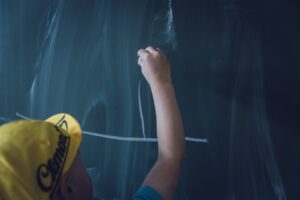Redefining Teaching Approaches in the Modern Era: Embracing Change for a Brighter Future
Today’s educators are not just conveyors of knowledge; they are facilitators, innovators, and guides in a dynamic learning environment.

Pixabay

Teacher 3
Talusan Central Elem. School
lipcelyn.darunday001@deped.gov.ph
As the world continues to evolve at a rapid pace, driven by technological advancements and a changing social landscape, the field of education is also undergoing a significant transformation.
Traditional teaching methods, which once dominated classrooms for decades, are now being challenged and redefined to meet the needs of the modern learner. Today’s educators are not just conveyors of knowledge; they are facilitators, innovators, and guides in a dynamic learning environment. To keep pace with these changes, a reimagined approach to teaching is essential—one that embraces adaptability, inclusivity, and the power of technology.
The traditional model of education, often characterized by a teacher-centered approach where information is delivered in a one-way format from teacher to student, is being replaced by a more learner-centered approach. This shift emphasizes active learning, where students engage in problem-solving, critical thinking, and collaborative projects that encourage them to take ownership of their learning journey.
In a learner-centered classroom, the teacher’s role is to facilitate rather than dictate, guiding students as they explore subjects at their own pace and in their own way. This approach recognizes the diversity of student needs, learning styles, and interests, and seeks to tailor instruction to better serve each individual. By fostering a sense of agency and independence, educators empower students to become lifelong learners, prepared for the challenges of the future.
Technology has become an integral part of modern education, transforming how teachers deliver content and how students engage with it. Digital tools such as interactive whiteboards, educational apps, online resources, and virtual classrooms have opened up new possibilities for personalized and flexible learning experiences.
Blended learning models, which combine traditional face-to-face instruction with online components, allow students to learn at their own pace and provide access to a wealth of resources beyond the confines of the classroom. The use of data analytics to track student progress enables teachers to identify areas where students are struggling and to adjust their teaching strategies accordingly. This data-driven approach ensures that instruction is targeted and effective, maximizing the potential for student success.
However, integrating technology is not just about using the latest gadgets or software; it’s about leveraging these tools to enhance the learning experience. Teachers must be trained not only in the technical aspects of these tools but also in how to effectively incorporate them into their pedagogy. Professional development and continuous learning are crucial in helping educators stay abreast of the latest educational technologies and teaching methodologies.
In addition to academic skills, modern teaching approaches increasingly recognize the importance of social-emotional learning (SEL). SEL focuses on developing students’ emotional intelligence, including skills such as self-awareness, empathy, communication, and resilience. By incorporating SEL into the curriculum, educators help students build the interpersonal skills necessary for success in both their personal and professional lives.
This holistic approach to education supports students in managing their emotions, setting and achieving goals, and developing healthy relationships—all of which contribute to a positive learning environment. In the modern classroom, the focus is not just on what students learn, but also on how they feel while learning. Creating a supportive, inclusive, and nurturing environment is key to fostering a sense of belonging and motivation among students.
In an era characterized by rapid change and uncertainty, critical thinking and problem-solving skills are more important than ever. Educators are now placing a greater emphasis on teaching students how to think, rather than what to think. This involves encouraging inquiry, questioning, and exploration, allowing students to engage deeply with content and to develop their own understanding of complex issues.
Project-based learning, inquiry-based learning, and design thinking are some of the strategies being employed to cultivate these essential skills. These approaches encourage students to tackle real-world problems, work collaboratively, and apply their knowledge in practical ways. By engaging in these hands-on activities, students learn to approach challenges with creativity and resilience—skills that are invaluable in the modern world.
A redefined teaching approach also places a strong emphasis on inclusivity and equity, ensuring that all students have access to high-quality education regardless of their background or circumstances. This involves adapting teaching methods to accommodate diverse learning needs, including those of students with disabilities, language barriers, or varying socioeconomic statuses.
Universal Design for Learning (UDL) is an educational framework that guides the development of flexible learning environments that can accommodate individual learning differences. By providing multiple means of representation, expression, and engagement, UDL ensures that all students can access and participate in meaningful learning experiences.
As education continues to evolve, teachers remain at the heart of this transformation. They are not just implementing changes; they are driving them. Teachers as change agents embrace innovation, challenge the status quo, and advocate for the needs of their students. They are adaptable, continuously learning, and open to new ideas and approaches.
Redefining teaching in the modern era is not about abandoning the past, but about building on it to create a more inclusive, engaging, and effective educational experience. By adopting a flexible mindset and embracing the opportunities that come with change, educators can help shape the future of education and empower students to thrive in an ever-changing world.
In redefining teaching approaches, we are not just preparing students for the next test or the next grade level—we are preparing them for life. And in doing so, we are also redefining what it means to be an educator in the 21st century.






